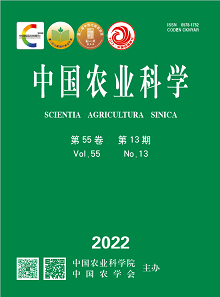【Objective】The unreasonable use of chemicals and irrigation water is the crucial to limiting the wheat production. The objective of the study was to clarify the current status of chemical fertilizers, pesticides, and irrigation water in wheat production of Northern China and their reduction potentials. Further, understanding the effects of farm size on wheat production could provide an effective reference for sustainable wheat production in China. 【Method】 Based on a large-scale survey in seven provinces of Northern China during 2018-2019, based on the nutrient requirements formed by wheat yield, the potential of fertilizer reduction in northern wheat regions and the potential of pesticide reduction based on the recommended amount of pesticides were assessed, and the water-saving potential based on Penman-Monteith was estimated, and then the effects of farm size on wheat yield and the input costs of chemical fertilizer and irrigation water were investigated. 【Result】The mean wheat yields of spring wheat area, Fenwei Plain, Loess Plateau, and oasis irrigation area were 3.0, 7.6, 4.7, and 7.4 t·hm-2, respectively. The application rate of nitrogen (N), phosphorus (P) and potassium (K) fertilizer was 87 kg N·hm-2, 91 kg P2O5·hm-2, and 1 kg K2O·hm-2 in spring wheat area, was 280 kg N·hm-2, 133 kg P2O5·hm-2, and 1 kg K2O·hm-2 in Fenwei Plain, was 178 kg N·hm-2, 117 kg P2O5·hm-2, and 25 kg K2O·hm-2 in Loess Plateau, and was 225 kg N·hm-2, 168 kg P2O5·hm-2, and 15 kg K2O·hm-2 in oasis irrigation area, respectively. The problems of excessive application of N and P fertilizers and insufficient application of K fertilizers coexisted. The reduction potential of N and P fertilizers was 25% and 40% in Fenwei Plain, respectively, which was 24% and 57% in Loess Plateau, respectively. The reduction potential of P fertilizer was 65% and 54% in spring wheat area and oasis irrigation area, respectively. The use of pesticides varied greatly in different areas of wheat production. In the spring wheat area of Fenwei Plain, Loess Plateau, and oasis irrigation area, the mean number of pesticides sprayed were 1.8, 1.4, 1.6, and 1.6 times, respectively; the reduction potential of pesticides was 40%-70%, 54%-83%, 40%-65% and 50%-83%, respectively. Insecticides and herbicides were the main types of pesticides, and the frequency of insecticides application accounted for 73%, which was higher than that of herbicides. For insecticides, imidacloprid and triadimefon were more commonly used. For herbicides, tribenuron-methy, 2, 4-D butyl ester, and sodium dimethyl tetrachloride were more often used. The irrigation times of wheat production were 2-4 in most cases. For Fenwei Plain, the mean number of irrigations was 2.2 times, and the river water was the most key source of irrigation water. For oasis irrigation area, the mean number of irrigations was 3.5 times, and the well water was the most key source of irrigation water. The water-saving potential in Fenwei Plain and oasis irrigation area was 14% and 42%, respectively. Small-scale farm size was the most common way to manage farms, resulting in a serious fragmentation of farmland in each wheat area. Compared with small-scale farm size, the large-scale farm size increased wheat yields by 7%-36% with reducing input costs by 17%-19%. 【Conclusion】The study reported the current status of the wheat yield, chemical fertilizers, pesticides, and irrigation water in wheat production of Northern China, and found that their application rates varied greatly between farmers and production regions. This brought huge potential for the reduction of chemical fertilizers, pesticides, and irrigation water. Moreover, combined with farm size, it clarified that an appropriate increase in farm size could increase wheat yield while decreasing input costs, which could be essential for optimizing management scale in wheat region of north China.









